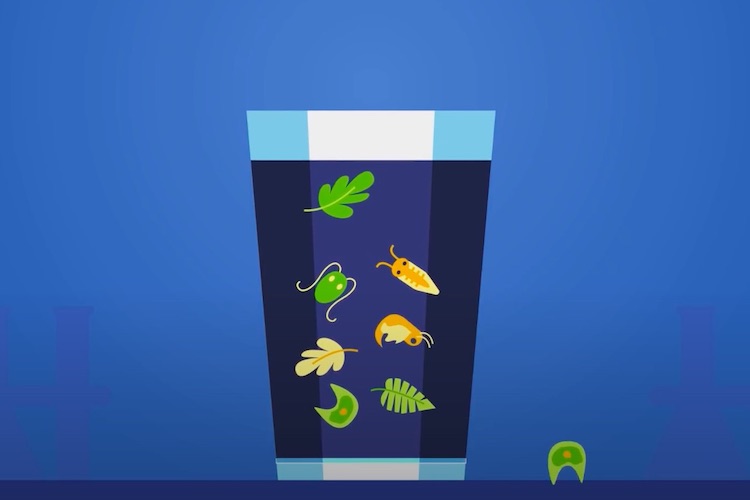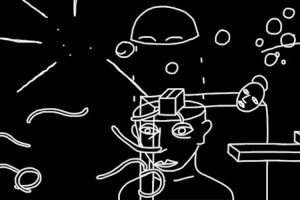Bioinformatics After High Throughput Sequencing
Bioinformatician Manja Marz on non-coding RNAs, the dynamic programming approach, and homology search

In January 2015 The American Naturalist publsihed an article Natural Hybridization between Genera That Diverged from Each Other Approximately 60 Million Years Ago about deep hybridization, reproductive isolation and speciation. We have asked one of the authors of this research, Dr. Carl Rothfels from University of California Berkeley, to comment on this work.
We first sequenced a short region of DNA from the fern’s nucleus. As in humans, in ferns half of this sort of DNA is inherited from the mother and the other half from the father. So if ×Cystocarpium were a hybrid, we would expect it to contain sequences from both parents. And it did! When we added the sequences from ×Cystocarpium to a dataset that contained sequences from a range of Cystopteris and Gymnocarpium species, the ×Cystocarpium sequences fell into four areas of the evolutionary tree: two in Cystopteris and two in Gymnocarpium. It turns out that ×Cystocarpium is a tetraploid (it has four copies of its genome) formed by the hybridization of two other tetraploids, one of which is the common oakfern (Gymnocarpium dryopteris) and the other is a member of the fragile fern complex (Cystopteris fragilis in the broad sense). In each case, the ×Cystocarpium sequences were identical to or very close to those of the putative Cystopteris or Gymnocarpium parent, indicating that the hybridization event occurred very recently.
Sixty million years is a very long time for two organisms to retain the ability to interbreed — typically that ability is lost within a few million years at most. To put this duration in perspective, the ancestors of humans diverged from those of chimpanzees a mere five or so million years ago; the hybridization event that formed ×Cystocarpium is roughly akin to a human producing a hybrid with a lemur or an elephant with a manatee. The fact that Cystopteris and Gymnocarpium retained some compatibility with each other after that amount of independent evolution raises interesting questions on how new species are formed and how this process might differ in different groups of organisms.
Specifically, in order for Cystopteris and Gymnocarpium to be able to hybridize, at least two very unusual things had to happen. First, the sperm of one of the species had to contact the egg of the other, such that a zygote could be formed. In many groups of organisms there are a variety of “prezygotic” barriers that prevent this from happening. For example, birds may recognize potential mates through specific songs or courtship displays, which reduces the chance of members of two different species mating with each other. And many flowering plants have cues (colours, scents, flowering times) tailored to individual pollinators, such that their pollen is more likely to arrive on the stigma of a member of the same species, reducing the opportunities for hybridization. In ferns, however, these behaviour-mediated prezygotic barriers are not available — instead, fern sperm simply swims through a layer of water in the soil to reach the egg. It could be, then, that many fern hybrids have an opportunity to form and ×Cystocarpium just “got lucky” somehow. And indeed, other putative hybrids involving deeply divergent parents are concentrated in taxonomic groups — like ferns, lycophytes, and gymnosperms — that use abiotic means (wind, water) to distribute their gametes and so might be expected to have few prezygotic barriers.
Regardless of whether it’s driven by slow evolution of prezygotic barriers, slow evolution of genic incompatibilities or both, the fact that total reproductive isolation appears to evolve more slowly in ferns and other groups with abiotically mediated gamete transfer offers some potential explanations for broad patterns of planetary biodiversity. For example, it is tempting to assume that the great abundance of flowering plant species (there are ~300 000 of them compared to only ~10 000 ferns, despite ferns being an older group) is due to increased competitive ability or “adaptability” of the flowering plants. However, it might just be that populations of ferns (and mosses, conifers, etc.) divide into two reproductively isolated populations more slowly than comparable populations of flowering plants, independently of the competitive abilities of their individual members.
Cystopteris and Gymnocarpium are in the family of ferns — the Cystopteridaceae — that I studied for my PhD, when I attempted to understand the patterns that underlie their diversification. This is a common, widespread family: members of Cystopteris and Gymnocarpium occur in most north temperate regions of North America, Europe and Asia and Cystopteris species occur on every continent except for Antarctica. For my thesis I used molecular data (DNA sequence information) to study the pattern of branching evolution in the family — its “evolutionary family tree” as it evolved from an ancient ancestor — as well as the role played in its diversification by the processes of hybridization and genome doubling. My results showed that while Cystopteris and Gymnocarpium belong in the same family of ferns, they are evolutionarily very distinct from each other. So I was both excited and skeptical, when I read the report of ×Cystocarpium roskamianum and its putative parents.
To further explore these possibilities, more studies of diverse groups of organisms are needed; currently most speciation research is based on a small number of taxa (mostly Drosophila, some birds and fish and a few groups of flowering plants). Laboratory-based studies of different groups would be particularly interesting, each encompassing a range of divergence depths. Such studies would remove the effects of prezygotic barriers and thus would allow researchers to better understand the rate of formation of genic incompatibilities (viability barriers) on their own, and provide insights into whether the mechanisms and rates of formation of such barriers differ across groups.

Bioinformatician Manja Marz on non-coding RNAs, the dynamic programming approach, and homology search

Richard Henderson on the advantages of cryomicroscopy, factors limiting new discoveries, and the history of mo...

Neuroscientist Klaus Linkenkaer-Hansen on the biology of mind-wandering, training one's attention, and the rol...